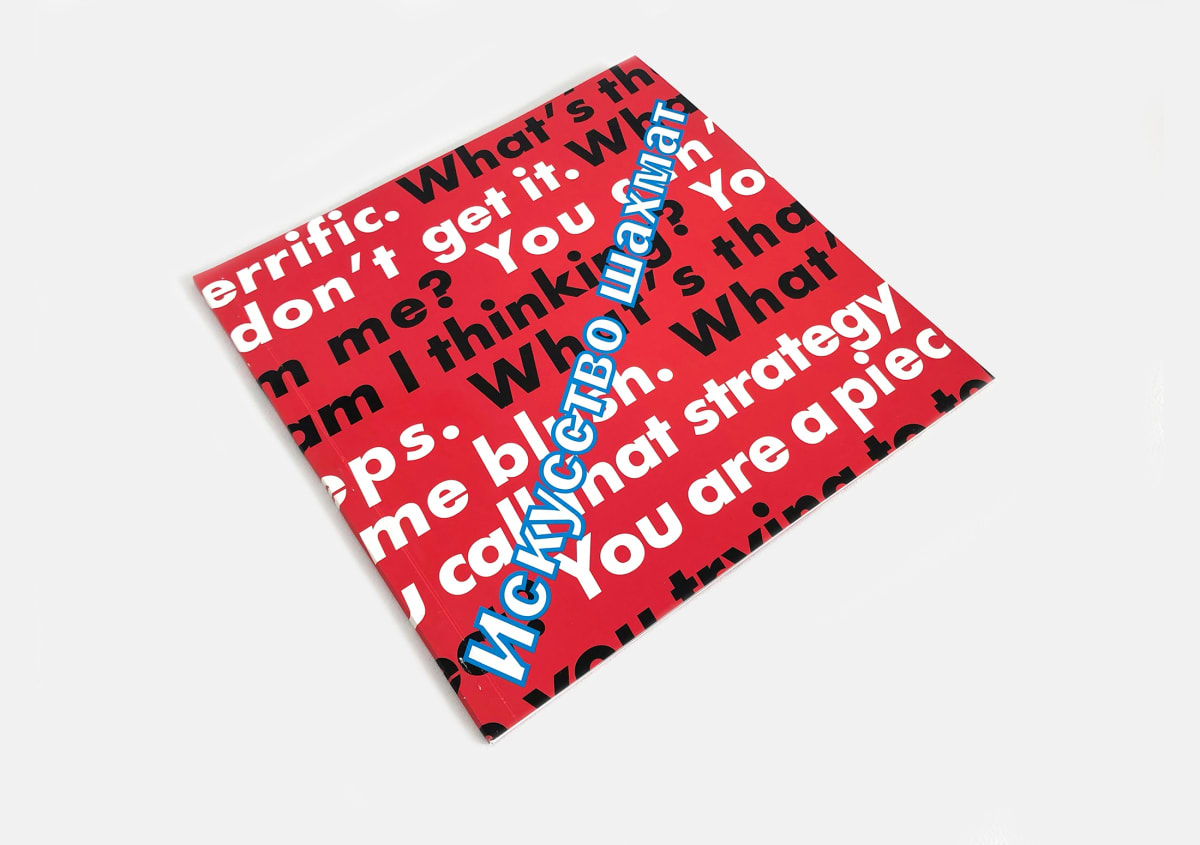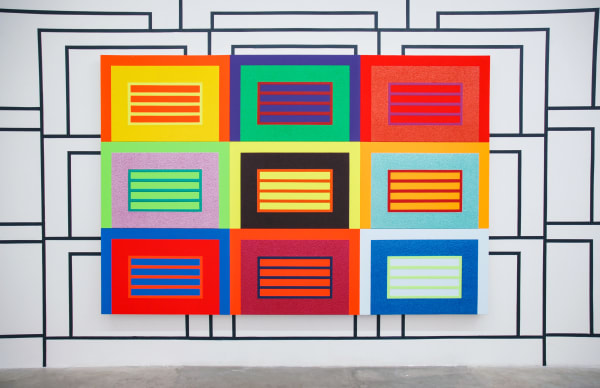The Art of Chess: Group Exhibition
-

The game of chess, with its roots reaching deep into ancient history, has long captivated the imagination of artists. Defined by strict rules and requiring intense concentration, chess has been celebrated as both a game of mind and a metaphor for broader human experiences.
-
Maurizio Cattelan
Damien Hirst
Paul Mccarthy
Jake & Dinos Chapman
Yayoi Kusama
Matthew Ronay
Tom Friedman
Tunga
Rachel Whiteread
Barbara Kruger
Download press release
Contact
 Email
Email
 Moscow
MoscowIts intellectual rigor, infinite combinations, and metaphorical depth have made it a natural subject for visual exploration—an ideal meeting point of strategy and imagination.
The convergence of chess and art has a long and distinguished history. One of its most iconic proponents was Marcel Duchamp, for whom chess was more than a game—it was a creative discipline in its own right. A passionate player, Duchamp famously claimed, “While all artists are not chess players, all chess players are artists.” His deep engagement with the game positioned it as an extension of his conceptual practice. Around the same time, in 1924, Bauhaus designer Josef Hartwig created a radically minimalist chess set, whose geometric forms embodied the school’s ideals of clarity, utility, and abstraction.
A pivotal moment in this dialogue arrived with The Imagery of Chess (1944–45), an exhibition organized by Duchamp and Max Ernst at New York’s Julien Levy Gallery. Featuring works by avant-garde icons such as Man Ray and Alexander Calder, the show offered radical reinterpretations of the chessboard, fusing surrealism, constructivism, and abstraction. These sets reimagined chess not just as a game but as a conceptual playground—where form, strategy, and symbolism collided.
Carrying this legacy into the present, The Art of Chess exhibition features original chess sets by some of the most significant contemporary artists of our time: Damien Hirst, Maurizio Cattelan, Paul McCarthy, Jake and Dinos Chapman, Yayoi Kusama, Matthew Ronay, Tom Friedman, Tunga, Barbara Kruger, and Rachel Whiteread. Each artist was invited to reinterpret the game through their own distinct visual language and conceptual framework, transforming a centuries-old pastime into a powerful artistic statement.
Rachel Whiteread’s Modern Chess Set transposes the logic of the game onto the scale of domestic architecture. Known for her evocative explorations of space, memory, and the traces of everyday life, Whiteread transforms chess pieces into miniature items of dollhouse furniture, neatly arranged within a custom-designed play box. The board itself is composed of alternating squares of linoleum and carpeting, invoking familiar interior textures and creating a space that feels at once nostalgic and contemplative—a quiet meditation on structure, order, and the personal landscapes we inhabit.
Tom Friedman approaches the chess set as a personal archive. Celebrated for his inventive use of common materials, Friedman assembles a mini-retrospective in chess form: a rook made from a toothpaste box, a bishop as a self-portrait carved in Styrofoam, and a pawn constructed from plasticine and gravel. The board, rendered as a rough wooden table with tree-stump seats, invites the viewer into an eccentric, tactile universe.
In Barbara Kruger’s characteristically subversive version, each chess piece is equipped with a miniature speaker containing a series of audio recordings. As the game unfolds, the pieces emit randomized questions and provocative statements—ranging from classic Kruger lines like “What’s up with your hair?” to declarations such as “You feel comfortable losing” and “You can’t be serious.” These snippets interrupt the game’s traditional silence, transforming it into an unpredictable, discursive performance. Heard together, the voices construct an audio conversation that parallels the act of playing, turning the chessboard into a platform not just for strategy, but for dialogue and ideological confrontation.
Brazilian artist Tunga’s Eye for an Eye set draws a poetic and unsettling analogy between chess and anatomy. Observing the numerical correlation between chess pieces and human teeth, Tunga casts each figure in bronze as a tooth-like form. The result is both visceral and symbolic, resonating with the themes of bodily transformation and mystical duality that defined his wider oeuvre.
From Damien Hirst’s signature use of provocative symbolism to Yayoi Kusama’s mesmerizing polka-dotted patterning, each work in The Art of Chess reveals the game’s continued capacity to inspire contemporary artists. In the hands of contemporary artists, the chessboard becomes more than a battlefield of minds—it is a site of play, subversion, memory, and meaning. The exhibition affirms that in the 21st century, chess remains not only a timeless intellectual pursuit, but a powerful platform for artistic expression.
-
Exhibited Works
-
 Maurizio CattelanUntitled (Good versus Evil), 2003Board and Box: wenge and walnut, foam and suede interior
Maurizio CattelanUntitled (Good versus Evil), 2003Board and Box: wenge and walnut, foam and suede interior
Pieces: hand painted porcelainBoard and Box: 21,5 x 59 x 59 cm
King: 16 cm; pawn 11 cm -
 Jake & Dinos ChapmanChess Set, 2003Board and Box: ebony and rosewood with inlaid skull and crossbones veneer
Jake & Dinos ChapmanChess Set, 2003Board and Box: ebony and rosewood with inlaid skull and crossbones veneer
Pieces: hand painted bronze figurines with lead crystal bases and miniature real hair wigsBoard and Box: 90 x 90 x 27 cm
Knight: 22 cm; pawn: 11 cm -
 Tom FriedmanUntitled, 2005Wall mounts: maple, american black walnut and perspex
Tom FriedmanUntitled, 2005Wall mounts: maple, american black walnut and perspex
Table and Board: maple and american black walnut
Pieces: mixed mediaWall mounts: 57 x 45 x 9 cm
Table and Board: 48 x 56 x 36 cm
Pieces: king: 48 cm; pawn: 2 cm -
 Damien HirstMental Escapology, 2003Cabinet: glass, mirrored glass, wood and stainless steel
Damien HirstMental Escapology, 2003Cabinet: glass, mirrored glass, wood and stainless steel
Chairs: modified dentist chairs in white leather
Surgical Trolley and Board: stainless steel, mirrored glass with black enamel inlay
Pieces: cast glass and hallmarked english silverCabinet: 65 x 82 x 16 cm
Surgical Trolley and Board: 88 x 74 x 74 cm
King: 19 cm; pawn: 5,5 cm
-
 Barbara KrugerUntitled (You Feel Comfortable Losing), 2006Board and Box: sublimated image in corian and customised flight case with printed text
Barbara KrugerUntitled (You Feel Comfortable Losing), 2006Board and Box: sublimated image in corian and customised flight case with printed text
Pieces: black and red corian, miniature speakersExterior: 101,9 x 94,5 x 23 cm
King: 17,9 cm; pawn: 7,9 cm -
 Yayoi KusamaPumpkin Chess Set, 2003Board and Box: hand painted porcelain, leather and wooden pumpkin display case with two leather cushions
Yayoi KusamaPumpkin Chess Set, 2003Board and Box: hand painted porcelain, leather and wooden pumpkin display case with two leather cushions
Pieces: hand painted porcelainBoard and Box: 75 x 110 cm
King 14,5 cm; pawn: 6,5 cm -
 Paul McCarthyKitchen Set, 2003Packaging: modified kitchen equipment (dishwasher)
Paul McCarthyKitchen Set, 2003Packaging: modified kitchen equipment (dishwasher)
Pieces: found objects and resin casts
King: 39 cm; pawn: 3 cm -
 Matthew RonayOver There in the Bushes, 2005Pieces: hand painted bronze
Matthew RonayOver There in the Bushes, 2005Pieces: hand painted bronze
Picnic basket: hand painted bronze
Picnic blanket and board: whiteleather and printed cottonRook: 17,5 cm; pawn: 1,5 cm
Picnic blanket and board: 138 x 138 x 2 cm
-
 TungaEye for an Eye, 2005Board and Box: mahogany
TungaEye for an Eye, 2005Board and Box: mahogany
Pieces: plated bronze with iron standsExterior: 75 x 75 x 7,5 cm
King: 14 cm; pawn: 14 cm -
 Rachel WhitereadModern Chess Set , 2005Board and Box: chess board with carpet and linoleum squares, printed games box with instruction manual
Rachel WhitereadModern Chess Set , 2005Board and Box: chess board with carpet and linoleum squares, printed games box with instruction manual
Pieces: replicas of artists own dollhouse furniture collection24,5 x 75 x 41,5 cm
King: 10 cm; pawn: 1 cm
-
-
Publications
-
Artist
-
-
Explore more
















